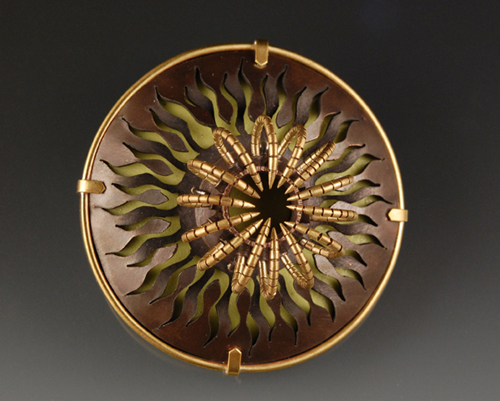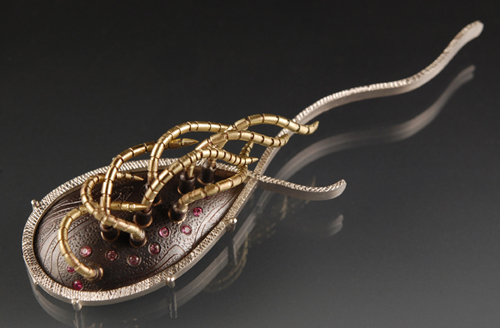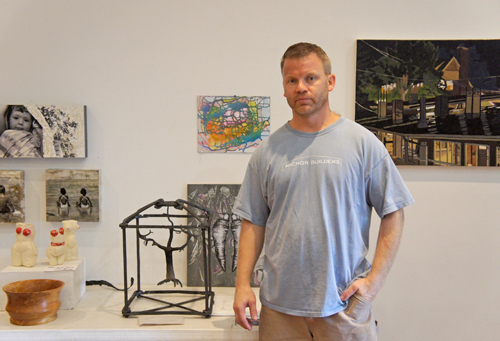The Penland Gallery and Visitors Center is pleased to present its sixth Focus exhibition of the year, Tangere, a new suite of wearable artworks by Tucson, Arizona-based artist Charity Hall. This show is open to the public in the Focus Gallery from Friday, August 31st through Sunday, September 30th.

“Lumenorbis, literally meaning ‘light of the world,’ examines the complex microcosm of a tiny foreign organism. Thousands of minute creatures remain elusive, completely unknown to science. They survive in specialized niches within the depths of deep sea vents, crevasses, or even in plain slight and will flourish or perish, irrespective of our awareness. The enamel in this piece glows in the dark.”

“A millipede crawling upon your hand feels halfway between barely noticeable and lightly tickling. You can feel the overall sensation of movement, but not the individual legs so delicately fragile on your callused hand. But if you existed on the same scale as a millipede and had it walking upon you, I imagine it would feel quite differently; its legs formidable, with the tips digging as it marches doggedly along.”

“In this body of work, I am using copper, brass, bronze, and silver along with a variety of tiny semi-precious gemstones. The appendage-like protrusions are made individually out of brass wire, and each ‘segment’ is cut with a jeweler’s saw. Some of the pieces glow in the dark, which is accomplished by a special firing process of fusing glow powder with enamel. This exploratory work examines tactility from the perspective of minute organisms, from radiolarians to millipedes. Tiny creatures experience and palpably digest their environment using an arsenal of appendages: antennae, flagella, legs, and tentacles. The dogged march of a millipede, the rhythmic undulation of feeding tentacles, and the quivering antennae of a lacewing each relay segments of information mechanistically necessary for survival. Although I’ve never studied entomology, I have always been an avid bug enthusiast and am fascinated by the intricate textural and mechanical details of invertebrates. I married an entomologist, and we spend time in the field collecting millipedes in California and in the Appalachians. We recently began keeping live millipedes, and it is fascinating to watch their rhythmic movements as they walk about.”
Charity Hall is a metalsmith and enamelist with a background in biology. She has a B.A. in botany and conservation biology from Colorado College, where she also took jewelry classes with Dindy Reich. After college, she worked as a biological surveyor and as a botanist for the U.S. Forest Service before pursuing graduate studies in Quaternary Sciences (paleobotany). After taking a ring-making workshop at Penland, where she met many working artists, Charity knew she wanted to become a metalsmith. She left her graduate program in the sciences to pursue an M.F.A., which she received from East Carolina University in 2008.
You can click here to visit Charity’s website, where you can see more of her work.
You can click here to visit the Penland Gallery website.
Penland’s Focus Gallery is a space primarily dedicated to single-artist exhibitions. Focusing on individual artists over the course of the year, it presents a larger selection of their work to gallery visitors and patrons.
You can click here for more information about Focus Gallery artists.



